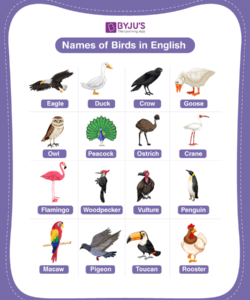Cranes are majestic and fascinating birds, admired for their elegant appearance, graceful movements, and unique calls. These tall and slender birds belong to the family Gruidae, and there are around 15 different species of cranes found worldwide. Each crane species has its own distinctive characteristics and adaptations, reflected in their diverse names.
Names According to Species
The names of cranes often describe their physical features or behavior. For example, the Sandhill Crane gets its name from its preferred habitat of sandy grasslands. The Blue Crane, found in South Africa, is named for its distinctive blue-gray plumage. The Demoiselle Crane has a delicate appearance with graceful movements, resembling a young woman at a debutante ball.
Some cranes are named after their calls. The Whooping Crane is known for its loud, trumpeting call, which it uses to communicate over long distances. The Siberian Crane has a piercing, bugle-like call that can be heard from miles away. These evocative names help distinguish the different crane species and provide insights into their unique characteristics.
Names Based on Habitat
Cranes are found in a variety of habitats, from wetlands to grasslands and even high-altitude mountain meadows. The Common Crane, widely distributed across Eurasia, is named for its abundance and adaptability to different environments. The Wattled Crane, found in the arid regions of East Africa, has developed toughened wattles around its eyes to protect them from the harsh desert winds.
The Sarus Crane, native to South Asia, prefers open grasslands and wetlands. Its name “Sarus” is derived from the Sanskrit word “sarasa,” meaning “waterfowl.” The Black-necked Crane, found in the Tibetan Plateau, has adapted to the high altitude and cold temperatures of its habitat. These names reflect the ecological niches and adaptations of the different crane species.
Conclusion
The names for crane birds are as diverse as the birds themselves. They provide insights into the physical characteristics, behavior, and habitats of these fascinating creatures. From the majestic Blue Crane to the distinctive Whooping Crane, each name tells a story about the unique adaptations and beauty of these elegant birds.
By understanding the names for a crane bird, we can appreciate the diversity and wonder of these remarkable species. Their names serve as a reminder of their importance in the ecosystem and inspire us to conserve these graceful giants for generations to come.
FAQ
What is the most common crane bird?
The Common Crane is the most widespread and abundant species of crane, found in Eurasia.
Which crane bird has the loudest call?
The Whooping Crane is known for its loud and distinctive call, which can be heard from several miles away.
What is the smallest species of crane bird?
The Demoiselle Crane is the smallest species of crane, measuring about 3 feet in height.
What is the heaviest species of crane bird?
The Sarus Crane is the heaviest species of crane, weighing up to 20 pounds.
Are cranes endangered?
Several crane species are endangered or threatened, including the Whooping Crane, Siberian Crane, and Black-necked Crane. Conservation efforts are underway to protect these magnificent birds.



